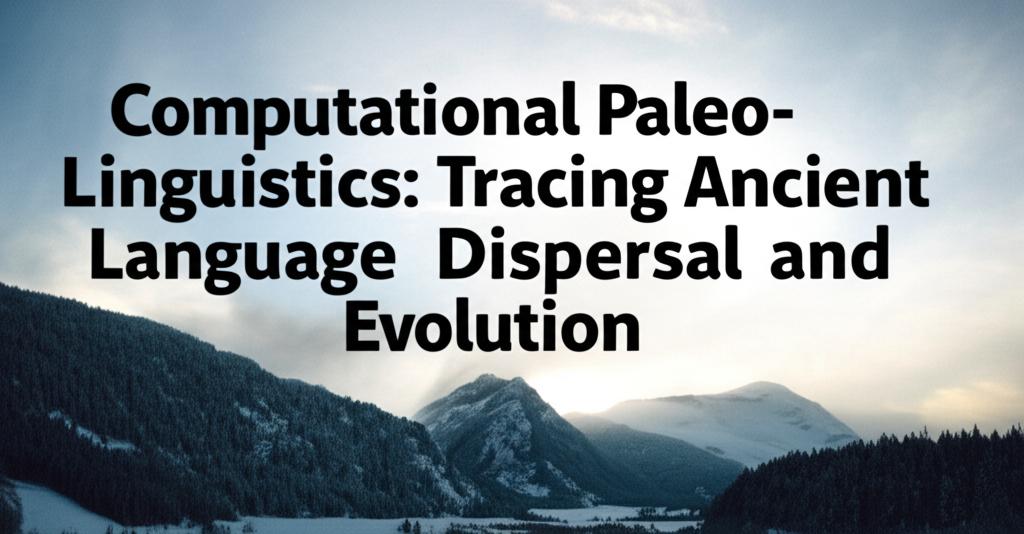Computational paleo-linguistics is a rapidly evolving field that leverages the power of computation to unravel the mysteries of ancient languages, their dispersal patterns, and evolutionary pathways. This interdisciplinary domain combines insights from historical linguistics, computer science, and increasingly, genetics and archaeology, to reconstruct the linguistic past.
Recent advancements highlight a shift towards more sophisticated computational models that can handle the complexities of language change over vast timescales. Traditional methods, often relying on the comparative method and phylogenetic tree-building, are being augmented and, in some cases, challenged by novel approaches.
One significant area of development is the use of Bayesian phylogenetic methods. These statistical techniques allow researchers to model language evolution as a probabilistic process, inferring divergence times and ancestral relationships with greater nuance. They can incorporate diverse types of linguistic data, from lexical information (like word lists) to phonological and morphological features. Recent work in 2024-2025 continues to refine these Bayesian models, aiming for increased accuracy and the ability to incorporate more complex evolutionary scenarios, such as language contact and borrowing.
A groundbreaking recent development (as of early 2024) is the Language Velocity Field (LVF) estimation method. This computational approach moves beyond the limitations of traditional phylogeographic models, which primarily focus on vertical descent (language splitting). The LVF method is designed to also account for horizontal transmission – the influence languages exert on each other through contact, borrowing, and areal diffusion. By creating a "velocity field" of linguistic traits changing over time and projecting this onto geographic space, the LVF method can outline language dispersal trajectories. This approach has already been applied to major agricultural language families like Indo-European, Sino-Tibetan, Bantu, and Arawak, showing dispersal patterns that align with population movements inferred from ancient DNA and archaeological findings. For instance, the LVF approach has provided new perspectives on the dispersal of Indo-European languages, suggesting a link with the spread of agriculture from Anatolia.
Furthermore, the integration of large language models (LLMs) and other machine learning techniques is opening new avenues. While LLMs are widely known for their generative capabilities, their application in historical linguistics is being explored for tasks like automatic cognate detection (identifying words with a common origin), reconstructing proto-forms (ancestral words), and even modeling semantic change over time. Advances in multilingual LLMs are particularly relevant, offering ways to process and compare data from a wide array of languages, including those with limited resources. Researchers are also exploring how to combine the strengths of LLMs with structured, expert linguistic knowledge.
Challenges remain, particularly in distinguishing between similarities due to common ancestry versus those arising from language contact or pure chance. The "data scatteredness" for many language families also poses an obstacle. However, ongoing efforts to create large-scale, standardized linguistic datasets are crucial for training and testing these computational models.
The development of user-friendly software packages, such as LinguiPhyR (an R package with a graphical user interface for phylogenetic analysis), is also making these powerful computational tools more accessible to linguists who may not have an extensive computational background. This facilitates broader application and testing of computational methods within the historical linguistics community.
In essence, computational paleo-linguistics is becoming increasingly sophisticated, offering powerful new tools to test hypotheses about where and when ancient languages were spoken, how they spread across the globe, and the intricate ways in which they changed over millennia. The synergy between advanced algorithms, growing datasets, and interdisciplinary collaboration promises even more exciting discoveries in our quest to understand humanity's linguistic heritage.

